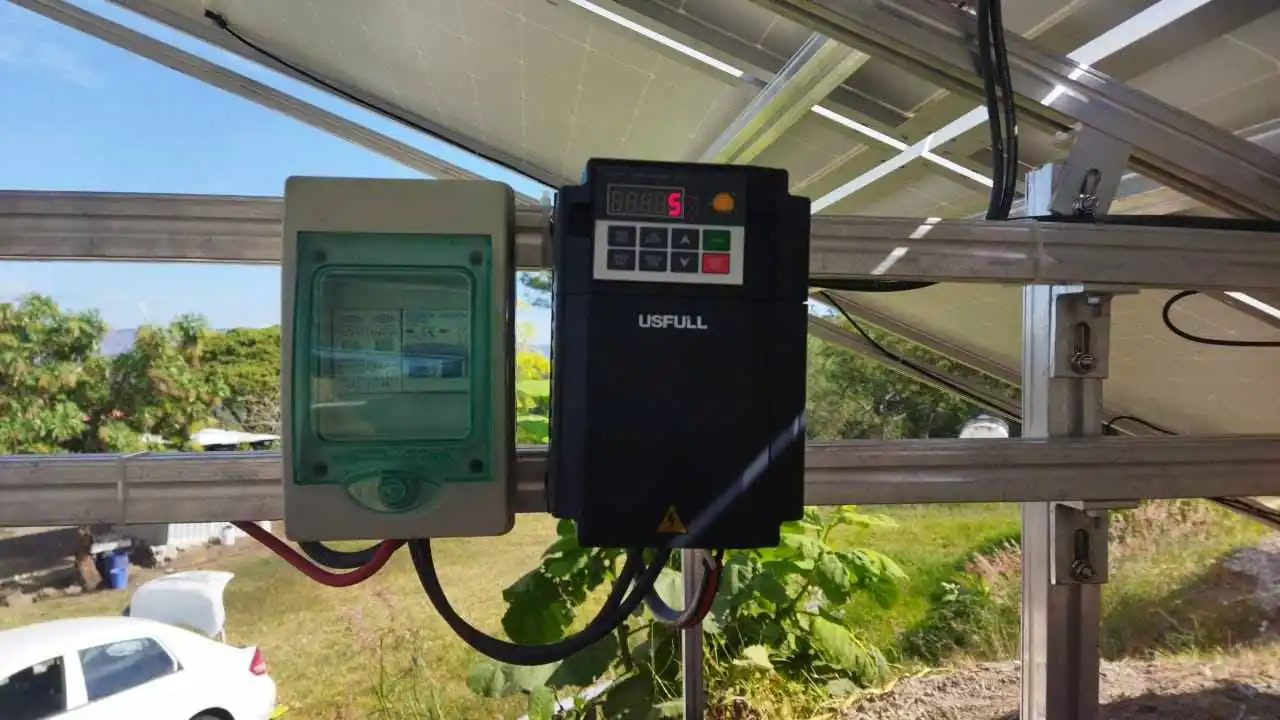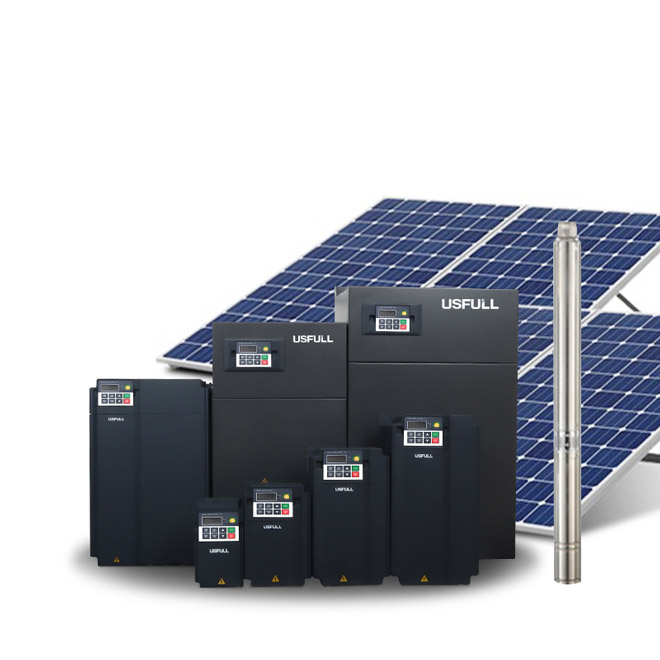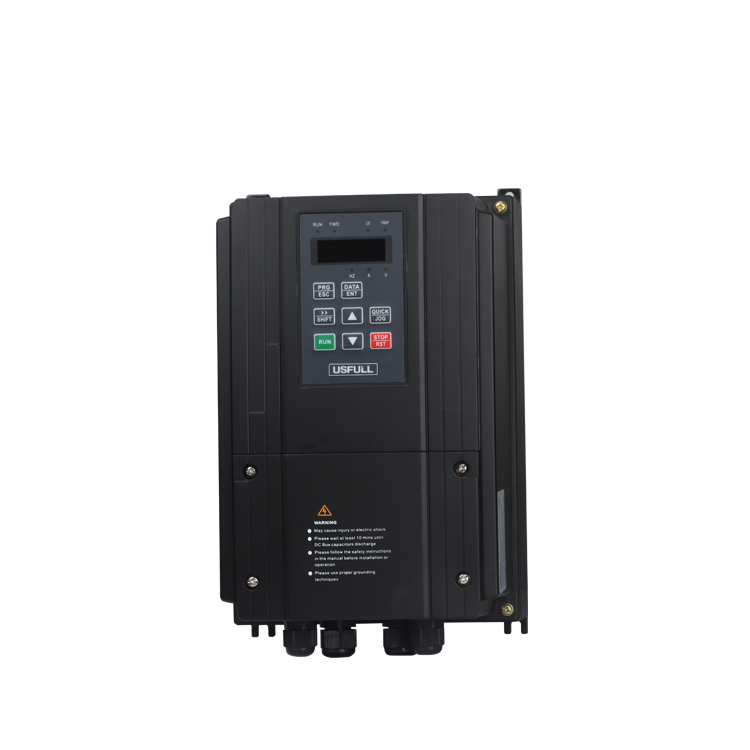Harnessing solar power for water pumping can be inefficient without the right technology. Poor system efficiency leads to water shortages and high costs. A solar pump inverter optimizes energy conversion, ensuring reliable and cost-effective water supply. Read on to discover how it works.
A solar pump inverter converts DC electricity from solar panels into AC power for water pumps, ensuring efficient operation with maximum energy utilization. Featuring Maximum Power Point Tracking (MPPT) and variable frequency drive (VFD) technology, these inverters optimize performance, reduce energy waste, and enable stable water supply even in fluctuating sunlight conditions.
Let’s explore how solar pump inverters work and why they are essential for solar-powered water pumping systems.

How Solar Pump Inverters Work?
A solar pump inverter is a key component in a solar water pump system, responsible for converting DC power from solar panels into AC power, which is necessary for running most water pumps efficiently. Without this conversion, direct solar energy would not be sufficient to start or sustain a water pump’s operation.
Modern solar pump inverters utilize Maximum Power Point Tracking (MPPT) technology to adjust the system’s performance based on sunlight intensity. This ensures that even during cloudy conditions, the pump operates at optimal efficiency. Additionally, variable frequency inverters (VFDs) regulate the pump’s speed based on water demand, reducing power consumption and prolonging pump life.
With a well-designed frequency inverter, users can efficiently extract water for irrigation, livestock, or household use without relying on grid electricity or diesel generators.
Why Use Solar Power for Water Pumps?
Using solar energy for water pumps offers multiple advantages, making it a preferred solution in both remote and urban areas.
- Cost Savings:A solar water pump inverter eliminates electricity costs by using free solar energy. After the initial setup, operational costs are minimal.
- Energy Independence:Unlike diesel-powered pumps, solar pumps do not rely on fuel supply, making them ideal for areas with unreliable electricity.
- Environmental Benefits:Solar-powered pumping systems reduce carbon footprints by eliminating fuel consumption and emissions.
- Reliability in Remote Locations:Many agricultural lands and rural areas lack stable power grids. Solar variable frequency inverters ensure continuous water supply in such areas.
- Low Maintenance:Unlike diesel engines, solar-powered systems have fewer moving parts, reducing wear and maintenance needs.
By integrating a solar pump inverter, users benefit from a sustainable, cost-effective, and reliable water pumping solution.
Can I Run a Water Pump on a Solar Inverter?
Yes, but several factors determine if a solar pump inverter can effectively power a water pump. The pump’s type, voltage requirements, and power rating must match the frequency inverter’s capabilities.
Key Considerations:
- Pump Type:Submersible and surface pumps have different power needs. Submersible pumps typically require more power at startup.
- Inverter Capacity:The variable frequency drive (VFD) must handle the starting surge, which is often 5-7 times the pump’s running power.
- Solar Panel Configuration:The total power output must be sufficient to sustain the pump’s operation throughout the day.
Using a properly sized solar water pump inverter ensures smooth operation, preventing overloading and inefficiencies.
What Size Inverter Do I Need to Run a Water Pump?
Selecting the right solar pump inverter size is crucial to ensure the system operates efficiently.
- Determine the Pump’s Power Rating:Check the water pump’s horsepower (HP) or kilowatt (kW)
- Account for Startup Surge:A pump typically requires an inverter with 5 times its rated power to handle the initial inrush current.
- Consider Continuous Power Needs:A variable frequency inverter allows gradual power adjustment, reducing energy waste.
For example, a 1 kW (1.3 HP) water pump should be paired with a 5 kVA frequency inverter to ensure stable performance. Choosing an undersized inverter may result in system failures.
The USFULL Solar Pump Inverter: Features and Benefits
USFULL offers a high-performance solar pump inverter designed to optimize water pumping with advanced energy management.
Key Features:
MPPT Technology: Achieves 99% energy conversion efficiency, maximizing solar power utilization.
Variable Frequency Drive (VFD): Adjusts pump speed based on demand, reducing energy waste.
Wide Input Voltage Range: Compatible with various solar panel configurations. Multiple Power Sources: Supports solar power, grid electricity, and diesel generators for uninterrupted operation.
IP65 Protection: Ensures dustproof and waterproof performance for outdoor installations.
Remote Monitoring: Provides WiFi/4G connectivity for real-time system management.
Comprehensive Safety Protections: Includes overload, undervoltage, overvoltage, and dry-run protection, extending pump lifespan.
By choosing a USFULL solar pump inverter, users gain a reliable, efficient, and durable water pumping solution.
Can I Run a Water Pump Straight from a Solar Panel?
No, a solar water pump inverter is required to regulate and convert the energy. Connecting a water pump directly to solar panels would cause:
- Voltage Instability:Solar panel output fluctuates throughout the day, making direct operation unreliable.
- Lack of Starting Surge Power:Most pumps require a high surge current at startup, which panels alone cannot provide.
- Inefficient Operation:Without a frequency inverter, the pump may stop running under low sunlight conditions.
Using a variable frequency inverter ensures stable performance and maximizes the lifespan of the pump.

How Many Solar Watts Does It Take to Run a Water Pump?
The required solar wattage depends on the pump’s power rating and system efficiency.
- A 1 HP (750W) water pumptypically needs 1200–1500W of solar panels.
- A 3 HP (2200W) pumprequires 3000–3500W of solar power.
- Higher efficiency panelscan reduce the total required wattage.
Proper system sizing, along with a solar pump inverter, ensures continuous operation even in fluctuating sunlight.
Installation and Maintenance of Solar Pump Inverters
Installation Steps:
- Select an optimal locationfor the solar panels to receive maximum sunlight.
- Connect the solar panelsto the solar pump inverter and then to the pump.
- Configure MPPT settingsfor efficient power utilization.
Maintenance Tips:
- Regularly clean solar panelsto maintain peak efficiency.
- Inspect electrical connectionsto prevent faults.
- Ensure proper coolingof the inverter to avoid overheating.
Proper maintenance enhances system longevity and efficiency.
Common Challenges and How to Overcome Them
Challenge 1: Inconsistent Power Supply
- Solution:Use an MPPT-enabled solar pump inverter for stable performance.
Challenge 2: Pump Fails to Start
- Solution:Ensure the variable frequency drive can handle startup surge power.
Challenge 3: Insufficient Water Flow
- Solution:Increase solar panel capacity or adjust inverter settings.
Proactively addressing these challenges ensures long-term system reliability.
Solar pump inverters optimize energy use, ensuring efficient, cost-effective water pumping for irrigation, livestock, and household needs. Choose USFULL for reliability.



